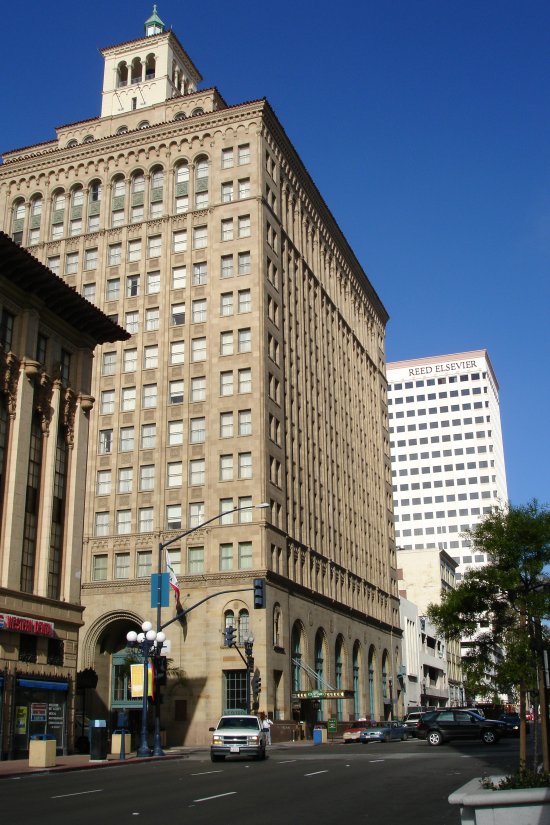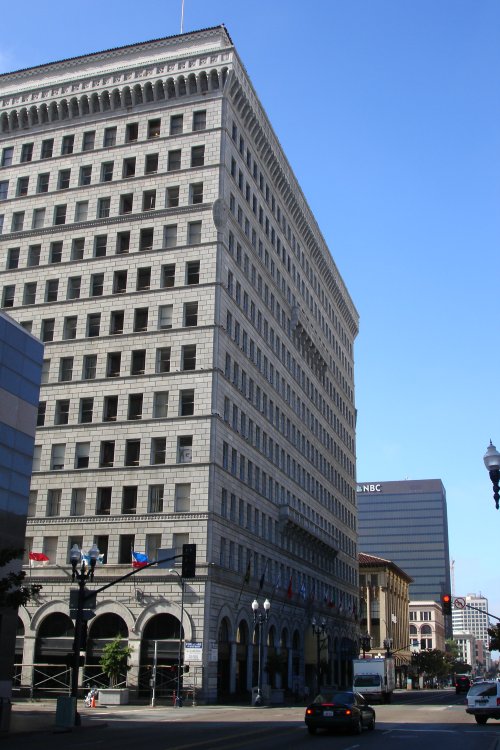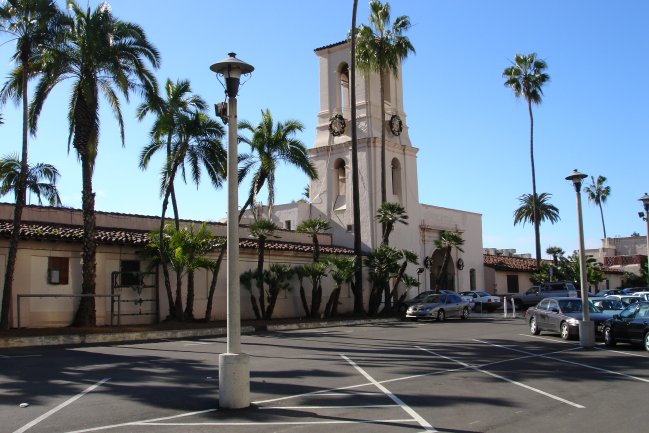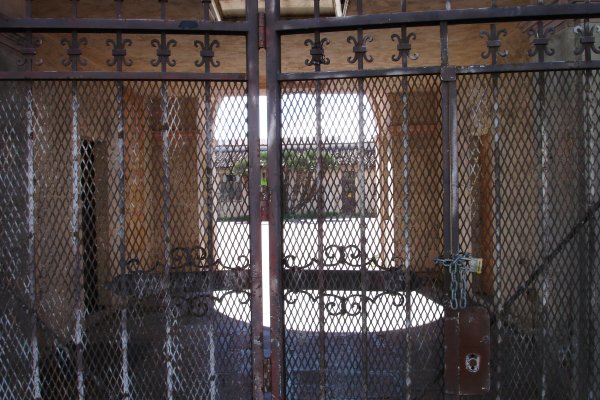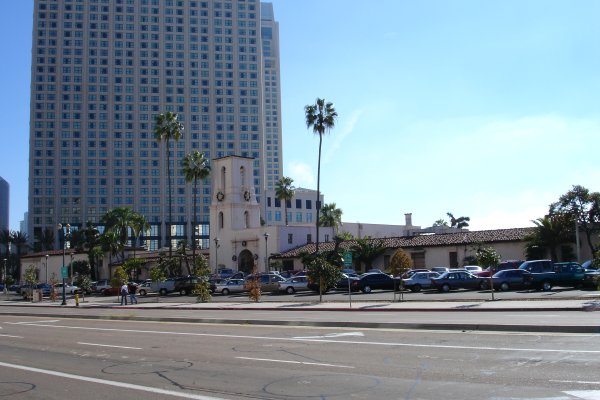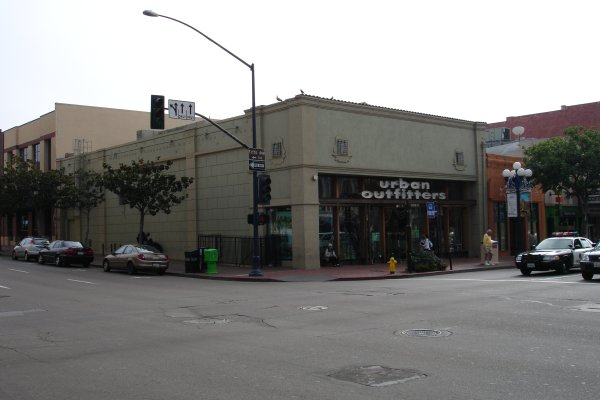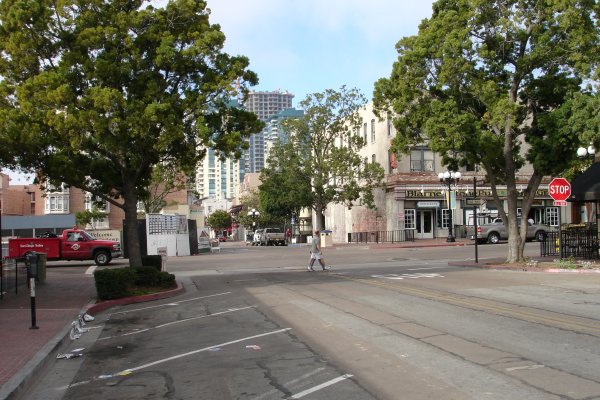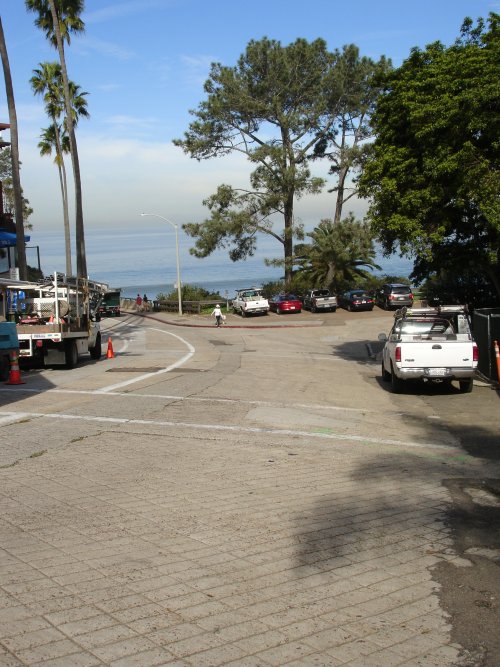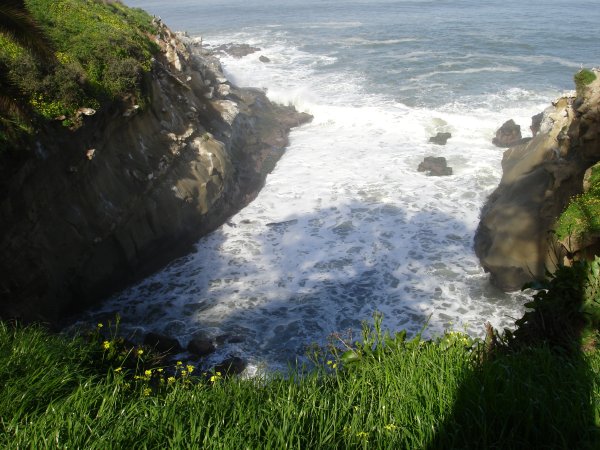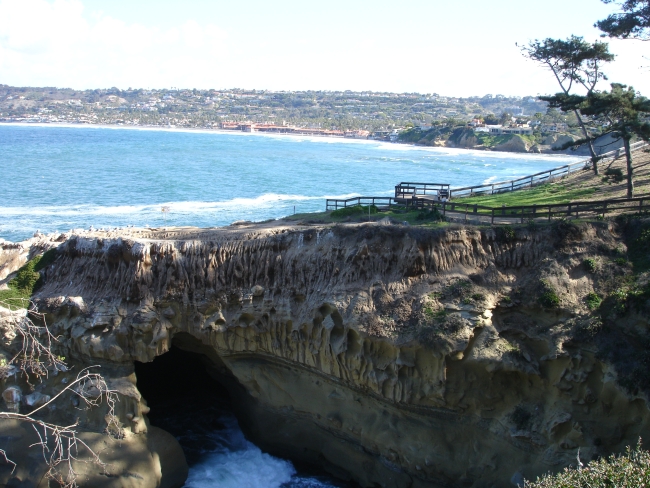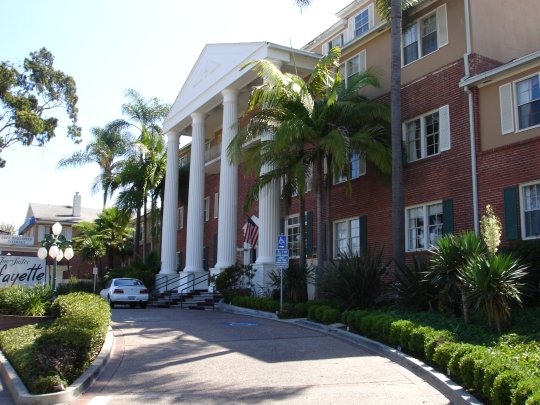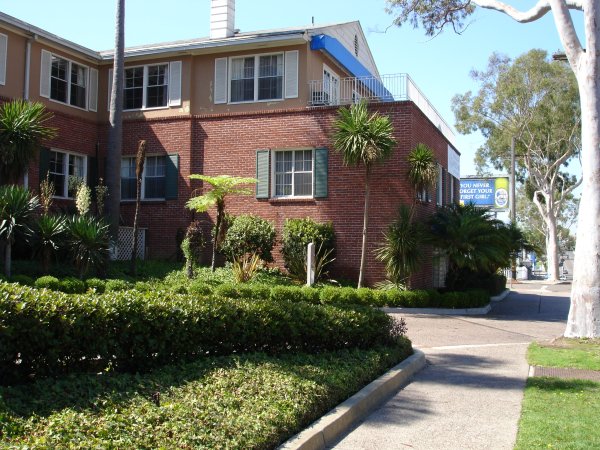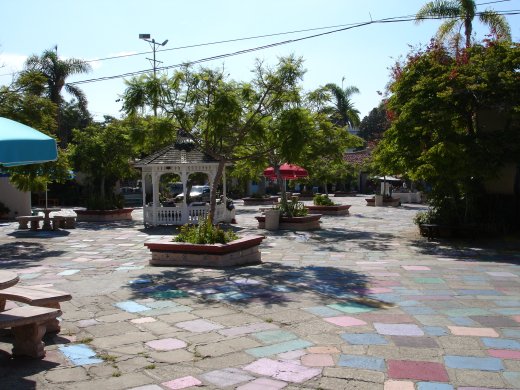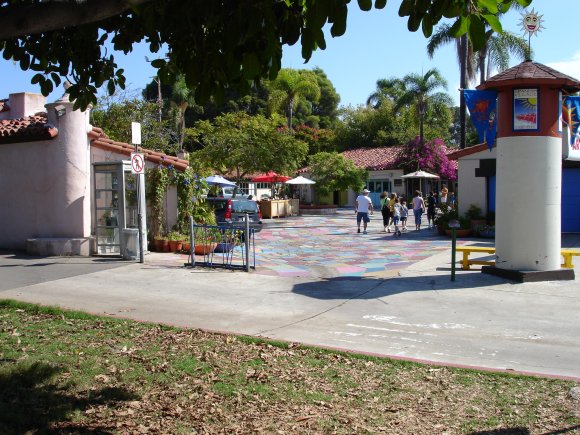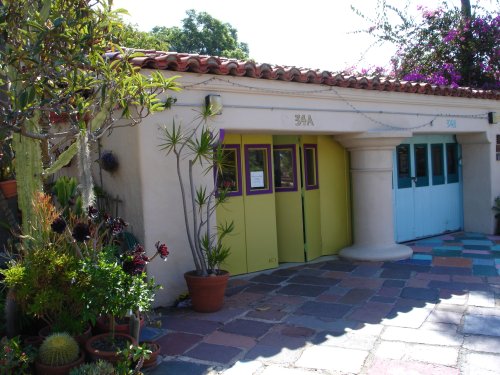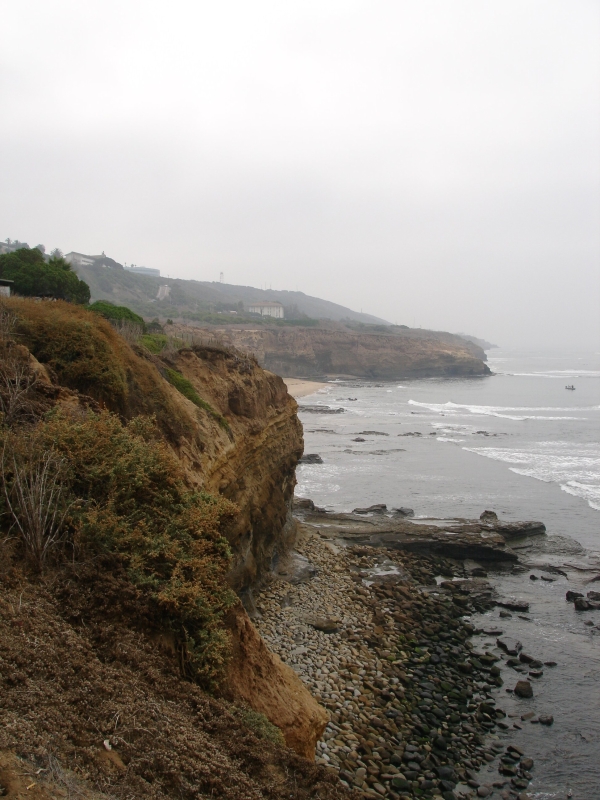Calamity Fair
Sixth and Broadway, downtown San Diego.
Formerly the San Diego Trust & Savings Building, this is now a Marriott Hotel. I'm not certain but I believe this is the likely setting for the "Bank of America" building in which Quincy Day had her sinister "Night & Day Agency" in Calamity Fair. Max Thursday said the building "towered over downtown." It doesn't tower over downtown anymore, and in fact, it didn't then either. Across the street (to the right of where I was standing when taking the picture) is the John D. Spreckels Building, which is almost as tall.
Thursday mentions that his own office was just a block away.
The Night & Day Agency was on the sixth floor.
